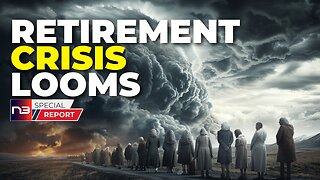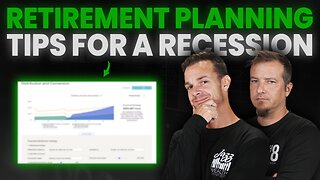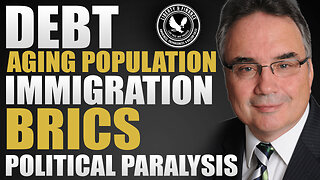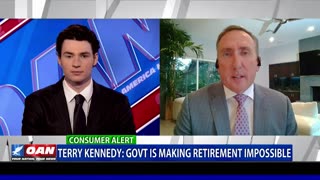Retirement Meltdown 2024: America's Retirement Crisis Reaches Critical Levels
Approximately 80% of households with older adults are currently facing financial struggles, and many are at risk of slipping into economic insecurity as they age. This concerning trend is worsening over time, with about 90% of these older adults experiencing a decrease in income. This scenario contributes to a looming retirement crisis, raising questions about potential solutions. The U.S. retirement system has shifted towards being more of a savings mechanism and less focused on providing income, heightening the risk that workers will outlive their savings.
The majority of households approaching retirement are not adequately financially prepared. A key measure of financial readiness is the ability to replace working income post-retirement, yet many Americans fail to achieve this. Typically, individuals will need to replace at least 70% of their wage income in retirement, but for those who have not saved enough, reliance on Social Security becomes inevitable. However, Social Security typically only replaces about 40% of pre-retirement income, leaving many households struggling to bridge the gap.
An analysis by Pew Charitable Trusts predicts that America's retirement crisis could cost federal and state governments an estimated $1.3 trillion by 2040. Moreover, the World Economic Forum highlighted a significant demographic shift: for the first time in history, the number of people aged 65 and over exceeds the number of children aged five or younger. These demographic shifts have substantial monetary implications and underscore the urgent need for attention and action.
The pressing question arises: why are many Americans falling short in the global retirement arena? Unfortunately, for a significant portion of the population, the journey toward retirement appears more like a convoluted path fraught with uncertainties. According to the Federal Reserve, only about a third of the U.S. workforce believes their retirement savings plan is on track. Beyond mere statistics, this sentiment reflects the collective pulse of aspirations and fears.
What drives this gap in retirement confidence? Besides shifting demographics, a major contributor is the prevalence of defined contribution (DC) plans over traditional defined benefit (DB) plans, as highlighted by Price Waterhouse Coopers. With over 60% of U.S. retirement assets now housed in DC plans, individuals bear more of the risks. This transition represents a fundamental change in the retirement landscape. In the past, retirees enjoyed more secure benefits from DB plans, whereas today's retirees navigate through the uncertainties of employee-managed DC plans.
However, PwC's research uncovers a stark reality: the median retirement account balance for those nearing retirement might amount to less than $11,000 per month over a 15-year retirement period. This sobering revelation is especially poignant for those banking on these savings for financial security.
An analysis by the National Council on Aging reveals that many older Americans lack the resources to weather financial shocks such as long-term care needs or sudden health issues. Despite a strong desire to age in place, 60% of older adults cannot afford just two years of in-home long-term services and support. This stark reality underscores the silent struggle faced by older adults
-
 10:19
10:19
NextNewsNetwork
2 months agoRetirement Crisis Looms: Experts' Dire Warnings You Can't Afford to Ignore, Act Now
1.15K4 -
 7:15
7:15
Morris Invest
4 months agoThey're LYING About Your Retirement
3522 -
 6:28
6:28
Mike Martins Channel
5 months agoSupreme Canon on Raising the Retirement Age? , USA will purposefully default on its debt,
4601 -
 28:29
28:29
CrownHavenWealthAdvisors
3 months agoThe Domino Theory's Impact On Your Retirement | How To Protect Your Retirement From A Market Crash
17 -
 9:36
9:36
Morris Invest
2 months agoThe Banks are COLLAPSING and it's getting worse
4321 -
 8:51
8:51
JazzWealth
3 months ago $0.02 earnedRetirement Planning Tips During A Recession 🤓
161 -
 11:15
11:15
JazzWealth
2 months ago $0.04 earnedRetirement Planning In Your 40's AND 50's! 😎
271 -
 33:05
33:05
Liberty and Finance
4 months ago $2.35 earned5 Factors Leading To Economic Crisis In America | Peter Grandich
1.69K28 -
 28:29
28:29
Duellstrategies
1 month agoFaulty Retirement Plans | Your Retirement TV
3 -
 4:03
4:03
One America News Network
5 months agoTerry Kennedy: Government In Making Retirement Impossible
5.84K